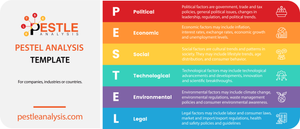The PESTEL framework (political, economic, social, technological, environmental, legal) helps managers assess how external factors affect a business.
The PESTEL framework is a strategic planning tool for analyzing an organization's external business environment. By identifying six key external factors that greatly impact business operations and performance, the framework will facilitate an easier and more efficient decision-making process.
What is the PESTEL Framework?
The PESTEL framework, or PESTEL analysis, is a business planning template that identifies and assesses how Political, Economic, Social, Technological, Economic, and Legal factors are affecting an organization or industry.
Depending on the analysis results, businesses can improve their strategic management and planning while responding to forces that are out of their control and gaining a competitive advantage.
PESTEL Framework External Factors
PESTEL factors are often present in other types of similar analyses. Business managers can choose any, based on the nature of the organization and the factors they wish to study. These different frameworks help to identify key factors to acknowledge, understand, and potentially use to their advantage. These include:
- STEP or the more popular PEST analysis that misses the Legal and Environmental factors
- STEEP analysis is based on the PESTEL framework minus the Legal part
- STEEPLE analysis adds the Ethical factors
- STEEPLED analysis includes the same factors plus ethical and demographic factors
What exactly are the categories in the PESTEL framework? Each is unique and offers a broad understanding of factors involving politics, economy, social traits, tech uses, environment, and legalities.
I have discussed some characteristics of these external factors below.
For a more detailed breakdown of these factors, check out this article about external factors in more detail. The article will help you determine which factors are more important to the company's specific strategy. This might serve as preliminary inspiration. However, you will have to dig deeper into the details to make accurate decisions.
Political Factors in PESTEL Framework
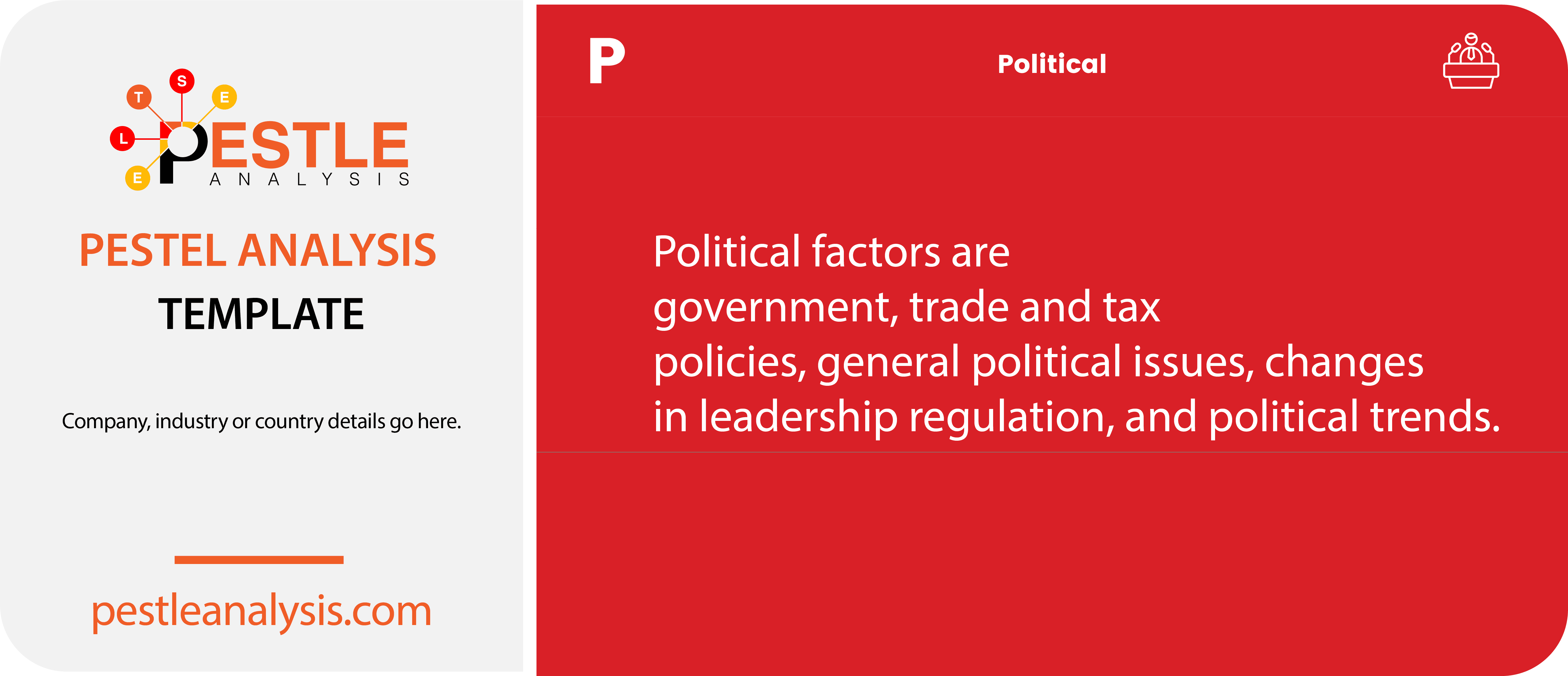
Politics plays an important role in business.
This is because there is a balance between systems of control and free markets. As global economics supersedes domestic economies, companies must consider numerous opportunities and threats before expanding into new regions. Political factors may even help determine the location of corporate headquarters.
This category can sometimes combine laws (from the legal group) since the government and their bills are closely linked. In general, you should focus on the political trend the current administration is leaning toward. Is the current government favoring open trade or focusing more on border control? Are they expected to stimulate the economy, or are they looking to improve the health system? Do they care more about corporations or about the workers?
Some of the political factors you need to watch and include in your PESTEL framework are:
- Stability of government and change of leadership
- Government policies
- Trade tariffs
- Tax policies
- Regulations
- Social policies (e.g. social welfare etc.)
- Trade regulations (e.g. the EU & NAFTA)
- Labor regulations
- Political trends
Political factors examples in PESTEL analysis
- Tax Policy: A government may increase corporate taxes, affecting company profits and potentially discouraging foreign investment.
- Trade Regulations: The imposition of tariffs on imported goods can increase production costs for companies relying on foreign raw materials.
You may find a more extensive list of political factors and how they affect businesses here.
Economic Factors in PESTEL Framework
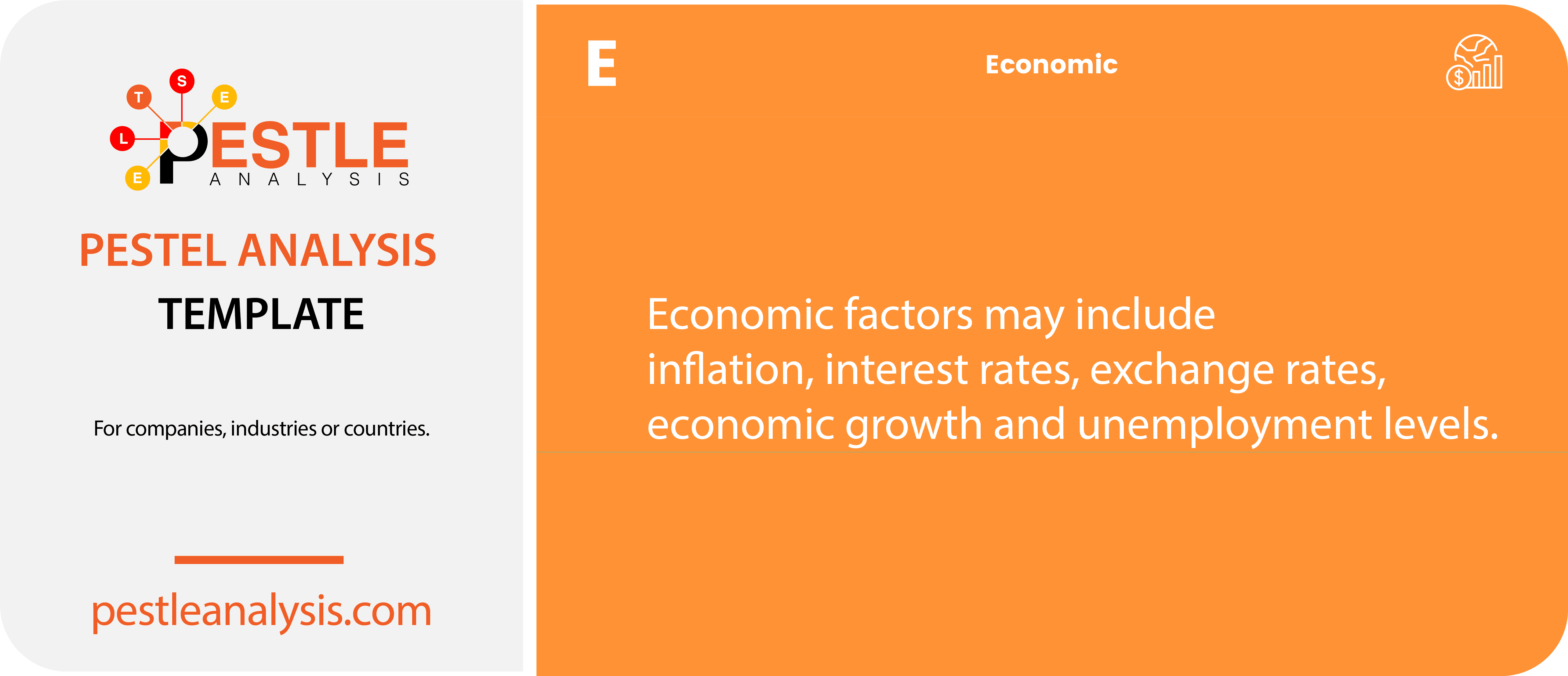
Economic factors are metrics that measure the health of any economic region.
The economic state will change many times during the organization's lifetime. You must compare the current levels of inflation, unemployment, economic growth, and international trade to better carry out your strategic plan.
General economic factors, such as goods, services, monetary value, and currency, will affect any business or product. Indicators like exchange rates, GDP, and inflation are critical to management. They can tell when it is a good time to borrow and help determine how an economy might react to certain changes.
Some examples of economic factors you can take into account in your PESTEL framework are:
- Disposable income of buyers
- Credit accessibility
- Unemployment rates
- Interest rates
- Inflation
- Exchange rates
Economic factors examples in PESTEL analysis
- Interest Rates: Higher interest rates can increase borrowing costs, leading to reduced capital spending by businesses.
- Economic Growth: An uptick in economic growth can boost consumer spending, leading to higher demand for products and services.
You may find a more extensive list of economic factors and how they affect businesses here.
Social Factors in PESTEL Framework
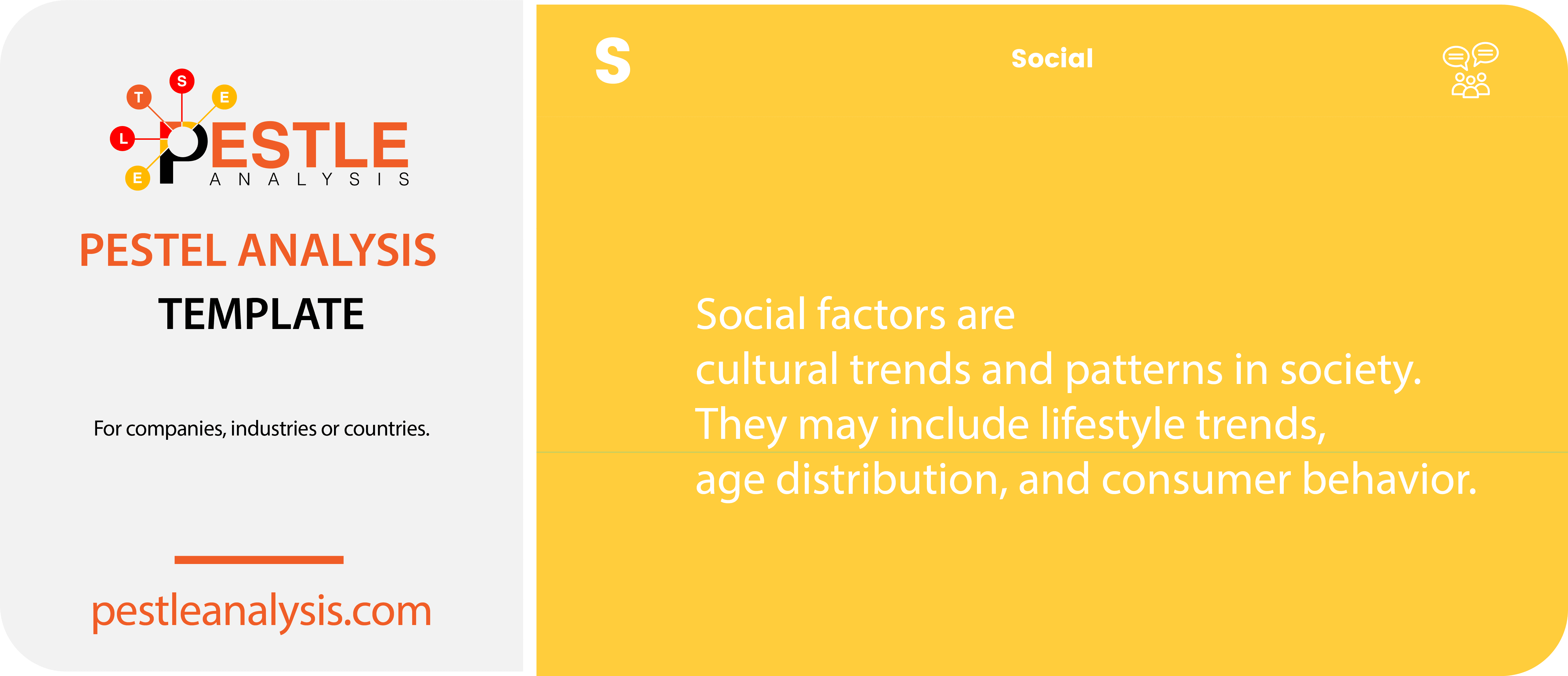
Social factors assess the mentality of individuals or consumers in a given market. These are also known as demographic factors. This category focuses on buying behavior and how consumer needs can affect the value and necessity of a product or service. The following are some social factors to focus on in your PESTEL framework:
- Population demographics: (e.g. aging population)
- Distribution of Wealth
- Changes in lifestyles and trends
- Educational levels
- Cultural differences
- Ethnicities
- Employment
- Location
Social factors examples in PESTEL analysis
- Demographic Shifts: An aging population may increase demand for healthcare services and products tailored to senior citizens.
- Cultural Trends: A growing trend towards sustainability can influence consumer preferences, leading businesses to adopt greener practices.
You may find a more extensive list of social factors and how they affect businesses here.
Technological Factors in PESTEL Framework
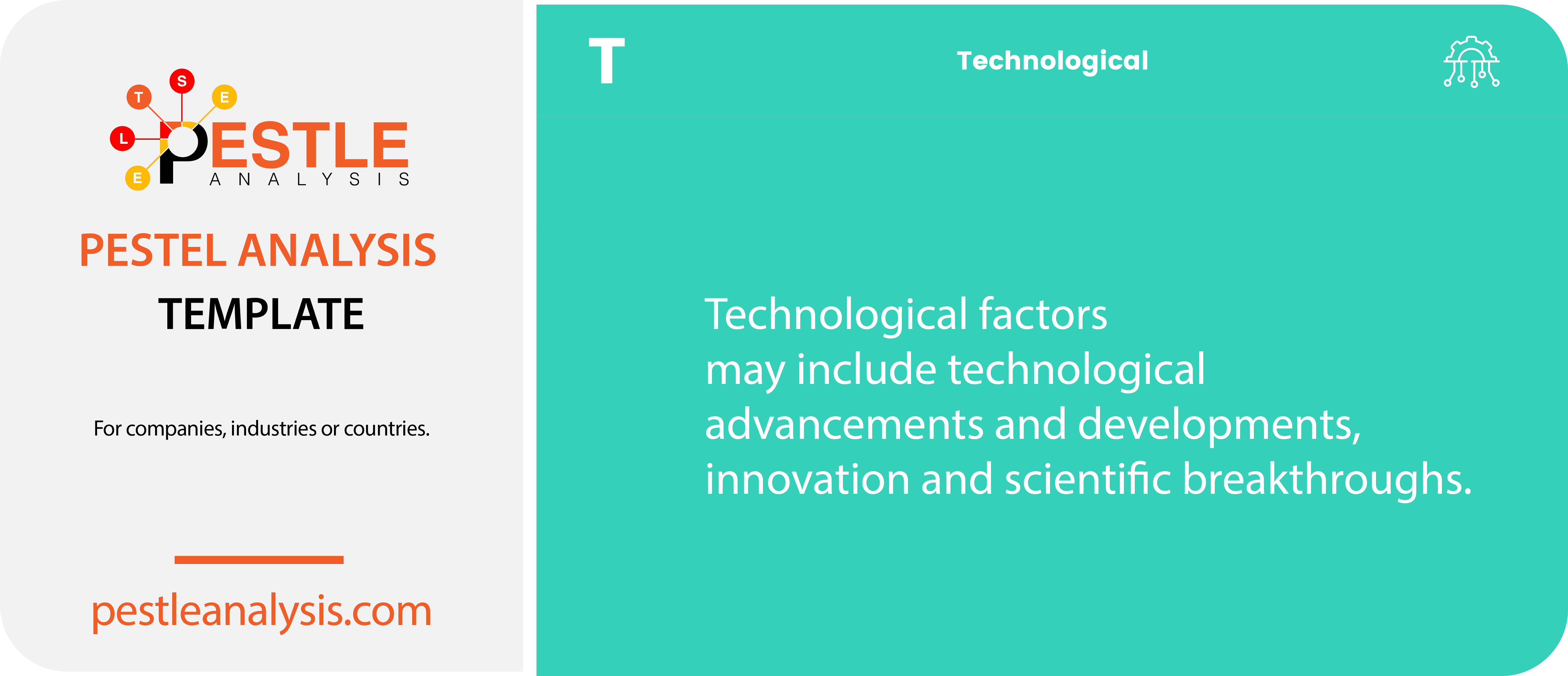
This step entails recognizing the potential technologies available. Technological advancements can optimize internal efficiency and prevent a product or service from becoming obsolete. The role of technology in business is increasing each year, and this trend will continue because R&D drives new innovations.
Recognizing evolving technologies to optimize internal efficiency is a great asset in management. But there are a few threats. Disruptive innovations such as Netflix affect DVD players' business. The best strategy is to adapt to the changes. Your strategies should sidestep threats and embrace opportunities.
Technology is continuously evolving — and not just digital technology, although the use of applications, websites, and similar products is on the rise. But even technology related to manufacturing, distributing, or communicating with consumers/employees must be considered too.
This is a large challenge for management. Below is a list of common technological factors to become part of a PESTEL framework:
- New discoveries and innovations
- Rate of technological advances and innovations
- Rate of technological obsolescence
- New technological platforms (e.g. VHS and DVD)
Technological factors examples in PESTEL analysis
- Advancements in AI: New artificial intelligence technologies can streamline operations and improve efficiency in industries like manufacturing and customer service.
- Cybersecurity: Rising threats in cyber security can compel businesses to invest significantly in secure IT infrastructures to protect sensitive data.
You may find a more extensive list of technological factors and how they affect businesses here.
Environmental Factors in PESTEL Framework
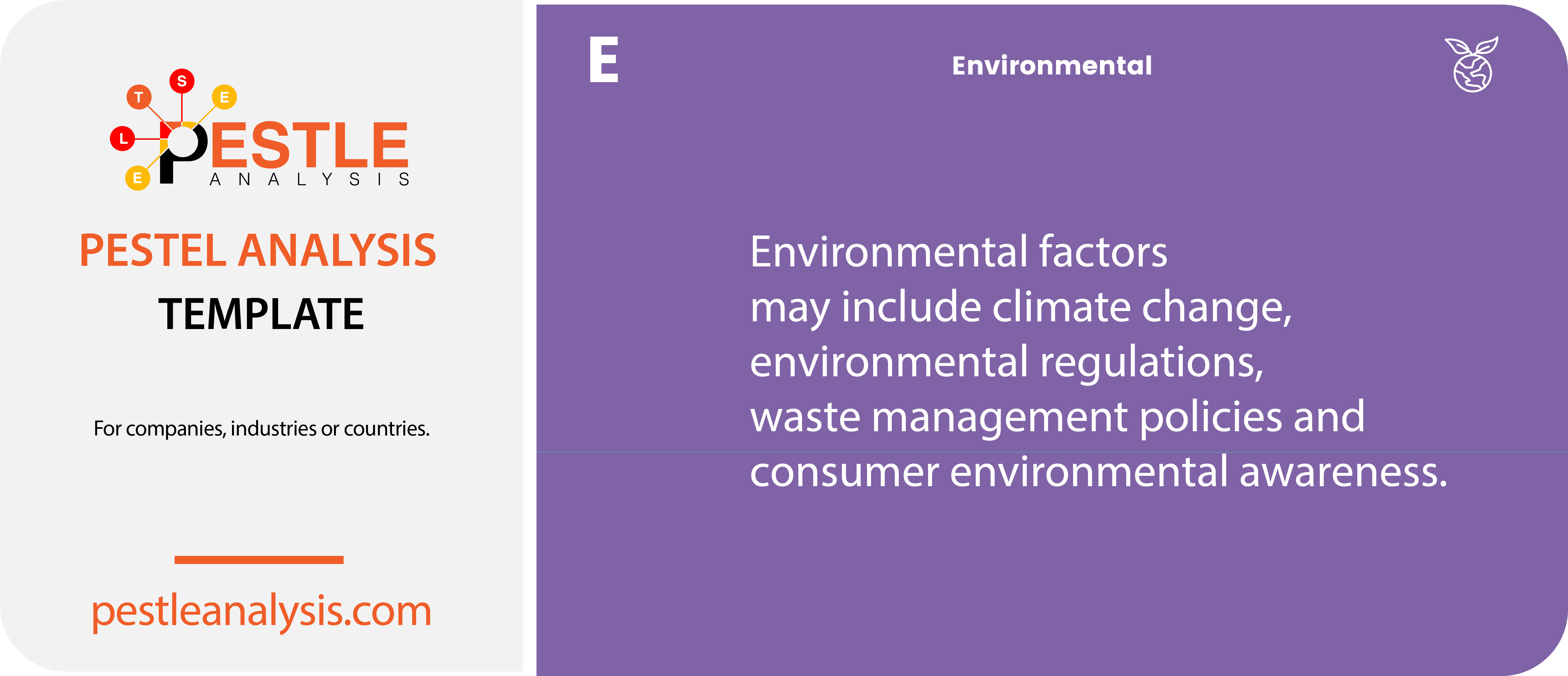
Sometimes referred to as ‘ecological’ factors as well, these PESTEL external factors involve physical changes. Think less of the workplace environment—which would apply to communication among employees—and more about how locations are affected.
Both consumers and governments penalize firms for adversely affecting the environment. Governments levy huge fines upon companies for polluting. Companies are also rewarded for having a positive impact on the environment. Consumers are willing to switch brands if they find a business ignoring its environmental duties.
The impact on the environment is a rising concern. Note that the environment benefits the company too. Running water for a hydro-power plant is an example.
A few common environmental factors of the PESTEL framework are:
- Waste disposal laws
- Environmental protection laws
- Energy consumption regulation
- Popular attitude towards the environment
Environmental factors examples in PESTEL analysis
- Climate Change: Increasing awareness of climate change can push companies to reduce carbon emissions and adopt more sustainable practices.
- Regulations on Waste: Stricter environmental regulations regarding waste management may require companies to invest in new recycling processes and technologies.
You may find a more extensive list of environmental factors and how they affect businesses here.
Legal Factors in PESTEL Framework
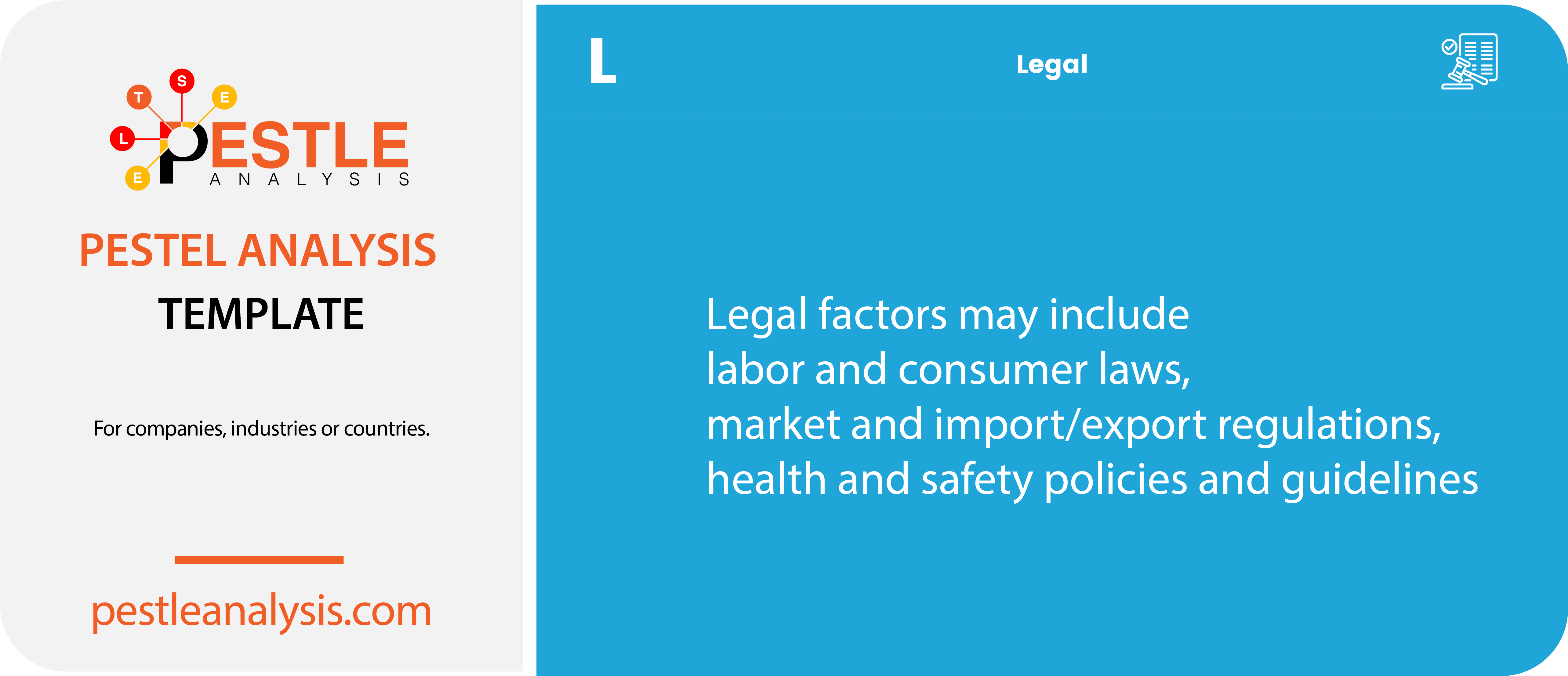
This final step involves learning about the laws and regulations in your region. In other words, ways in which particular laws may affect business, ideas, or concepts. It is critical to avoid unnecessary legal costs. The laws are created by policymakers and government bodies, which is why they are sometimes weaved within the political section of PESTEL analysis. But the regulations here focus on the well-being of consumers or society rather than benefiting the agencies that crafted the laws.
This is the last factor in the PESTEL framework. These factors overview the legal elements. Often, start-ups link these elements to the political framework. Many legal issues can affect a company that does not act responsibly. This step helps to avoid legal pitfalls. You should always remain within the confines of established regulations.
Common legal factors that companies focus on include:
- Employment regulations
- Competitive regulations
- Health and safety regulations
- Product regulations
- Antitrust laws
- Patent and Copyright infringements
- Import/Export laws
Legal factors examples in PESTEL analysis
- Data Protection Laws: New regulations like the GDPR impose strict rules on data management, affecting how companies collect and handle personal information.
- Employment Laws: Changes in labor laws, such as minimum wage increases, can impact operational costs and hiring practices.
You may find a more extensive list of legal factors and how they affect businesses here.
Why use the PESTEL Framework and How to do a PESTEL analysis
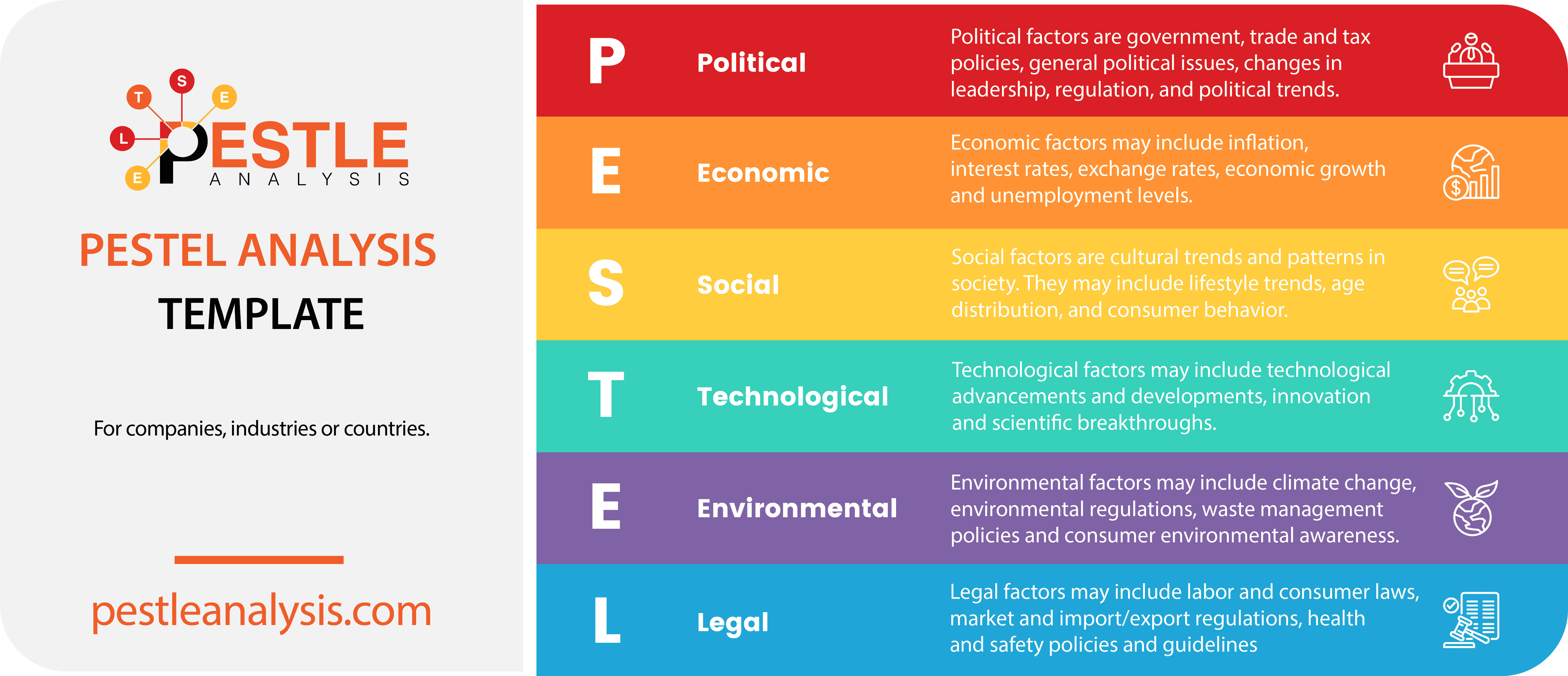
When you go through each of the six categories and apply the insights to a business, product, or concept, you will understand what is standing in the way of its success.
Conducting a PESTEL analysis is a pivotal step before making significant decisions or embarking on major projects. Understanding all the influencing factors is the first step to addressing them.
While you can’t change fixed external elements like copyright laws, taxes, or inflation rates, understanding their direct impact on a business each quarter is paramount. For example, you can understand what percentage of taxes will cost your business each quarter and what it means for the economy as a whole if inflation rates skyrocket and how that impacts the business world.
With this understanding in place, you can use it to your advantage. Especially in comparison to competitors who may not leverage the richness of insights provided by a PESTEL analysis.
Remember, there are many factors other than these which can have an effect on business success. The evaluation is a one-to-one process; what proves beneficial for one company might pose significant challenges for another. Identifying factors with strategic and competitive implications allows you to tailor your business strategies effectively.
Undertaking a PESTEL analysis is a comprehensive endeavor due to the complexity of the macro-environment. However, mastering this framework helps you systematically identify each opportunity and threat, enabling a structured and strategic approach to business planning.
Once you have mapped out the PESTEL framework, it becomes a foundational tool for strategic development. The insights derived from analyzing macro-environmental factors will inform and shape your business strategies, ensuring they are as responsive to current and future external conditions as possible.
If you’re gearing up to align a company’s strategies or simply aiming to enhance your decision-making process, starting with a PESTEL analysis is a prudent move. Armed with a deeper understanding of your operational environment, you’ll be better positioned to make informed, strategic decisions. For a practical guide and resources on how to conduct a PESTEL analysis, check out this step-by-step guide—it’s an investment in knowledge that pays the best interest for your business’s future. Also make sure to check out examples of PESTEL analysis here.

